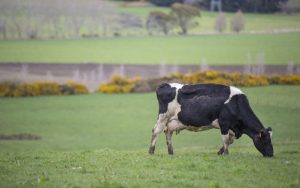
Whole milk powder has seen some of the biggest price drops.
Its price index declined by the largest amount in over a year, down 4.4% to an average winning price of US$4207/t following the April 20 auction.
That result, which saw a 3.6% fall in prices came as no surprise to analysts, given what is going on around the globe.
NZX dairy insights manager Stu Davison said he was surprised the percentage fall wasn’t higher.
In an NZX pre-auction update, he said “simply put, my expectations are very bearish prior to this auction”.
China’s covid-19 lockdown in Shanghai, the Ukraine war and Sri Lanka’s economic crisis had all fuelled the deterioration of demand, he said.
Prices, he said are “down but not out”, pointing to turbulent times ahead for the global dairy market.
ASB’s Commodities Weekly similarly pointed to China, saying the lockdown was causing huge disruptions to the country’s domestic supply chains.
Westpac agricultural economist Nathan Penny put the result into context.
Despite the fall, overall and WMP prices still both sit 13% higher than as at the end of 2021.
But the size of the fall showed the Omicron outbreak in China had surpassed all other dairy market concerns, he said.
But there is one positive, despite the global disruptions – demand remains steady while global milk supply is constrained.
On the production side, milk volumes among Northern Hemisphere producers is down because of the spike in input costs – namely feed and fuel.
In the US, production was down 1.4% and 2% both in Germany and the Netherlands for the first two months of the year.
In New Zealand across that same period, milksolids production declined 6.7% year-on-year to nearly 360,000 tons, according to the Dairy Companies Association of New Zealand.
As a result, it’s highly unlikely there will be the kind of volatility seen in the past when producers in Europe and North America lifted production to take advantage of high prices, which flooded the market and crashed prices.
Any farmer who recalls boom-bust cycle in 2015 when the milk price dropped to $3.85 will remember how it had previously leaped to $8.40, Penny said.
He cites various reasons for this.
Past volatile cycles had been fuelled by the growth in dairy conversions in NZ.
That was now largely a thing in the past.
“In fact, we project that the dairy herd has shrunk by around 400,000 cows between 2016 and 2022.”
Tighter regulations, labour and credit constraints have all contributed to this fall, he said.
What it means is the industry can no longer crank out production like it could in the past.
“The upshot is that as it stands the boom-bust milk price cycles are behind us.
And unless there is a major unwinding in regulations and compliance around land use, in particular, the milk price has moved structurally higher.
“We expect it to average around $8.00/kg in today’s dollars over the long term from here,” he said.
As a result, in mid-April the bank shifted its milk forecast up 75 cents to $9.25/kg MS for the new season, which should more than match the huge lift in farm expenses across the board.
They have retained that prediction because it believes the lockdown in China will eventually lift.
Davison said the slide will have a negative impact on milk price forecasts for the coming season despite saying earlier in the month there was potential for the price to hit $10/kg MS for the first time – with the disclaimer that the forecast has low confidence.
ASB senior economist Chris Tennent-Brown was more positive, saying the declines won’t stop a record milk price for this season.
The bank was sticking with its current milk price picks – $9.50/kg MS for this season and $9.20/kg MS for the new season.
There are two more auctions scheduled before Fonterra announces its opening forecast for the new season.
Given the global state of play and how quickly China opens itself up from its lockdown will determine what those numbers could be.























